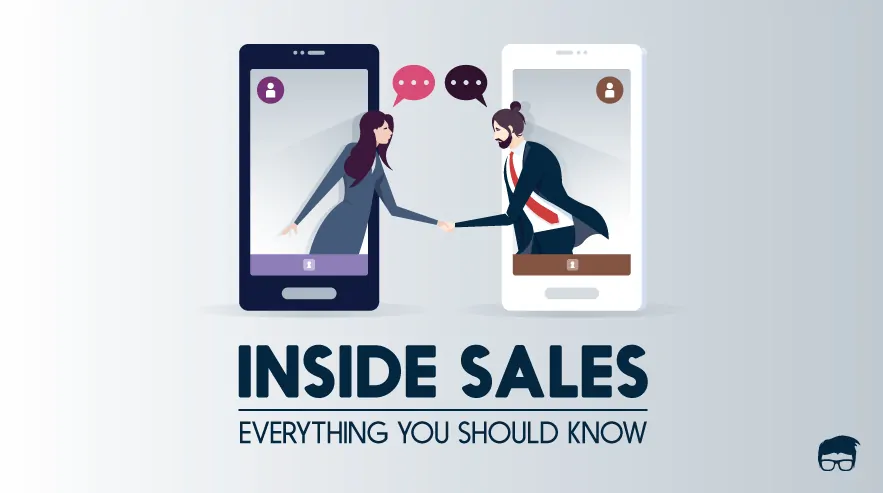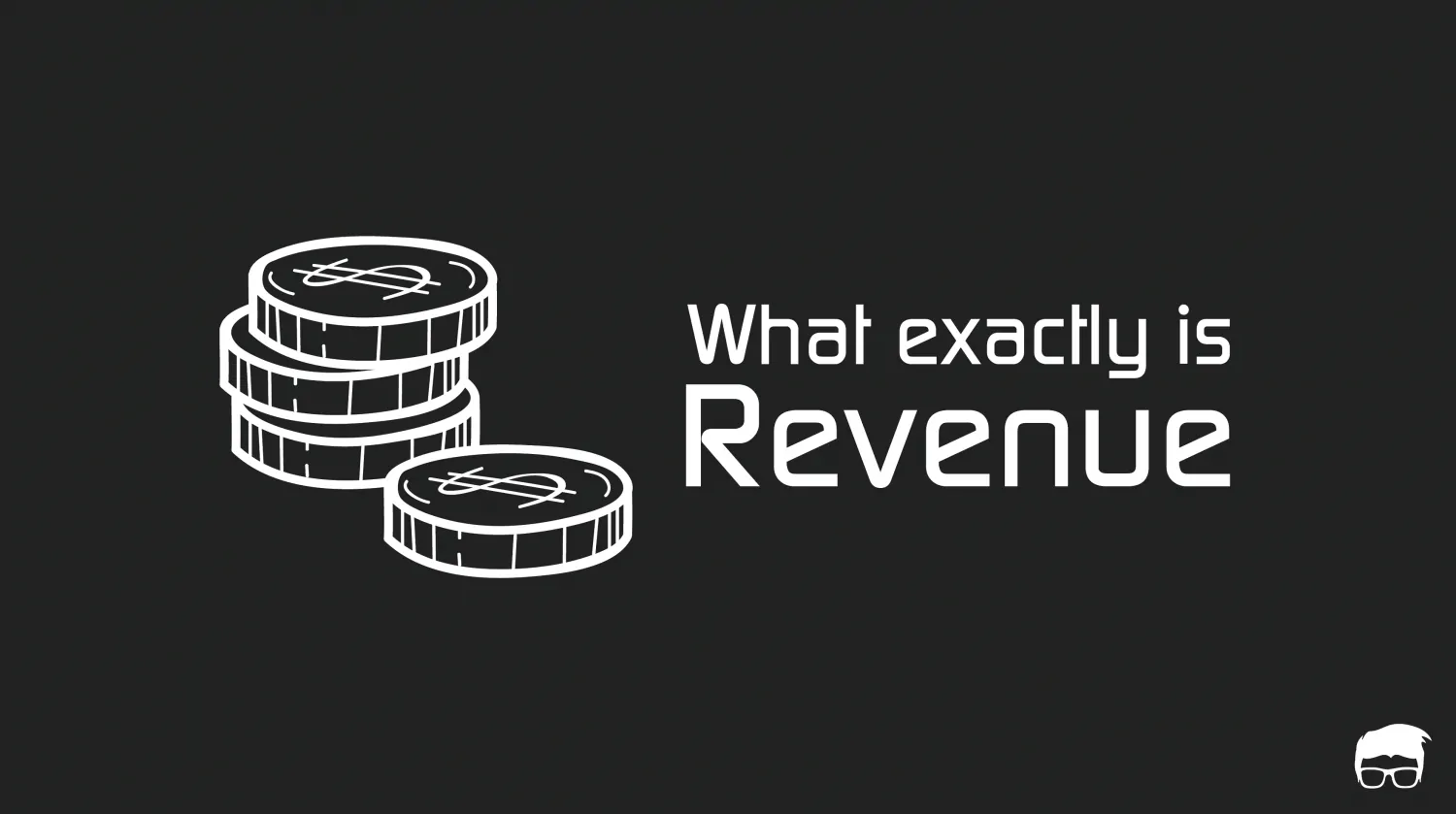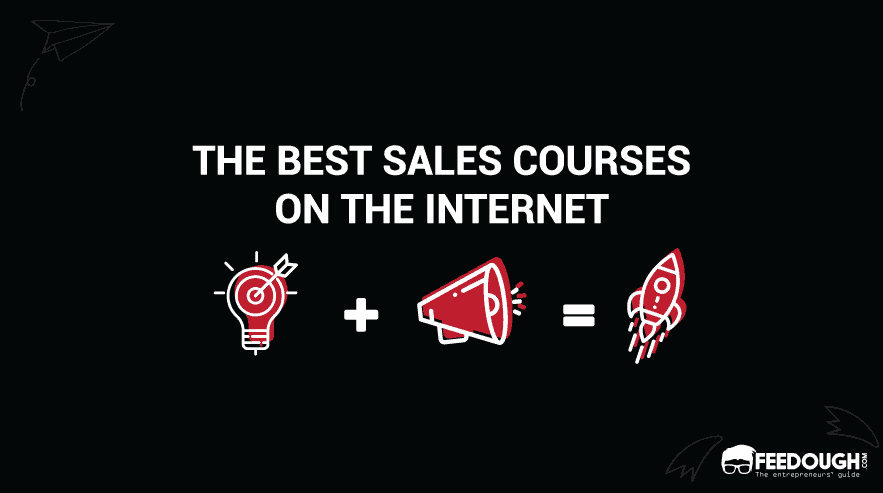With the recent advancement in technology, we barely see any salesperson knocking at someone’s door to sell something. Instead, many of the businesses are switching to inside sales instead of outside sales because of the reduced cost and efficient time consumption.
But what exactly is inside sales and how is it different from outside sales?
What Is Inside Sales?
Inside sales, also called remote sales or virtual sales, is a type of sales which identifies, nurtures, and converts prospects remotely.
In simple terms, inside sales is a type of direct sales of offerings through remote sources such as emails, calls, chats, etc., without the actual face-to-face contact of the salesperson and the prospect.
Unlike how the traditional form of sales work, inside sales doesn’t require a salesperson to spend much time with the prospect. However, it requires him/her to be more tech-oriented and to make use of sales and customer relationship management software to be in constant touch with the prospects during their buying process.
By 1970s, inside sales was a term used to differentiate the then famous telemarketing. But as technology advanced and as the customers started spending more time on digital devices like smartphones and laptops, the scope of inside sales also expanded.
Today, unlike telemarketing, inside sales personnel use almost every touchpoint possible to reach and pitch to customers remotely. These include – emails, SMS, social media networks, website chats, and telephones.
The technique has proved to benefit the organisations monetarily as well. According to Harvard Business Research, inside sales reduces the cost of sales by 40-90% when compared to field sales.
Inside Sales vs Outside Sales
According to a recent study, inside sales is expected to grow 15 times more than outside sales. Many businesses have both inside sales and outside sales or just one of the two based on their business model. But how are these two types of sales different?
Outside sales involves scheduling meetings with customers, meeting them, and travelling around to nurture and convert the leads. It is also called field sales.
Inside sales, unlike the outside sales model, doesn’t require the salespersons to go out and meet prospects to nurture and convert them. It usually involves tasks that can be performed through a virtual source. The inside sales force has a routine that they follow from a stationary place, either from the office or sometimes they even work from home.
Inside Sales | Outside sales |
|---|---|
The sales rep does the role of pitching through a remote channel like over a call, an email or through online chats. | The sales rep schedules a meeting and meets the customer in person to nurture and convert a lead. |
It is time and cost effective as the sales rep is able to contact a number of leads every day from a stationary spot. | Most of the time and energy goes in travelling. |
The salesperson works along with a team and a manager in a collaborative manner. | It is more of an individual task. |
The quantity of leads is more important than quality. Sometimes the leads are not quality ones. | More than the quantity, the quality plays a vital role as the rep might spend most of the day travelling to meet one particular client. |
It is more suited for selling smaller, less expensive and less complex goods/services. | It is the best for more expensive and complex goods as the customer might feel safer when buying these products face to face. |
Inside sales is more efficient with the right tools of automation. It also depends heavily on the communication skills of the salesperson. | It depends solely upon the skills of the salesperson. |
According to Dave Elkington, inside sales is growing 300% faster than outside sales.
One primary advantage of inside sales over outside sales is the money and time saved in travel especially if the business is a startup or doesn’t have good financial backing. According to a study, an average outside sales call costs $308 whereas an inside sales class costs only $50.
Inside Sales Benefits
- Productivity: It is highly productive as a salesperson can contact a number of leads over call in a single day without wasting time on travelling and scheduling meetings.
- Cheaper: It also helps to save up on the cost especially when the company has a limited budget.
- Less time and energy consuming: An inside salesperson can save a lot of time and focus their energy towards coming up with new strategies and improvising their pitch to sell the product instead of wasting time on travelling.
- Flexibility: The sales force has a lot of flexibility with time and location as this can be done remotely.
- Automation adaptability: With an increase in the kind of automation tools and technology being used in modern marketing, the number of deals closed and revenue gained is higher in inside sales.
- Accessibility: Access to remote places while reducing the CPL thereby increasing the revenue.
- Collaborative: Inside Sales promotes collaborative work involving the team, manager and the sales rep giving no space for any errors.
Inside Sales Strategies
While different businesses operating in different industries use different inside sales strategies according to the touchpoints their prospects interact with most, here are the three most common components of inside sales.
Telephone Sales
Also called telesales, this type of inside sales involves the use of telephone calls to solicit customers. Telephonic sales are often involves cold-calling to identify the prospects, and personalized telephone-based selling to nurture and convert the identified prospects.
Cold calling can be done either by the salesperson himself or can be automated where robocalling is used to identify prospects. Once identified, the prospects then interact directly with the sales rep.
Emails
Emails are the textual version of calls. Just like telephone sales, this technique involves sending cold emails to identify the prospects, and personalized email-based selling to nurture and convert the identified prospects.
Just like telesales, cold-emailing is also automated using advanced tools and software. Once the prospect is identified, the sales-person steps in to nurture and convert it.
SMS & IM
SMS or instant messaging applications like Whatsapp are often used to find and identify sales prospects. Often times, this strategy is used just to identify prospects. Once identified, the process is followed by telesales.
Social Selling
Social selling is the newest form of inside sales which makes use of social media marketing platforms like LinkedIn, Facebook, Twitter, etc. to directly interact with the prospects on social media to generate and convert leads.
LinkedIn is the most common social selling channel which is mainly used to carry out B2B inside sales.
Final Thoughts
Inside sales is slowly taking over outside sales as a more dominant sales channel. Businesses have noticed this trend and have started using a mix of inside sales, outside sales, and automated sales to get the best results.
Go On, Tell Us What You Think!
Did we miss something? Come on! Tell us what you think about our article on inside sales in the comments section.
A startup consultant, digital marketer, traveller, and philomath. Aashish has worked with over 20 startups and successfully helped them ideate, raise money, and succeed. When not working, he can be found hiking, camping, and stargazing.







